Series 2
Series 2, Seminar 1 - Ross Mitchell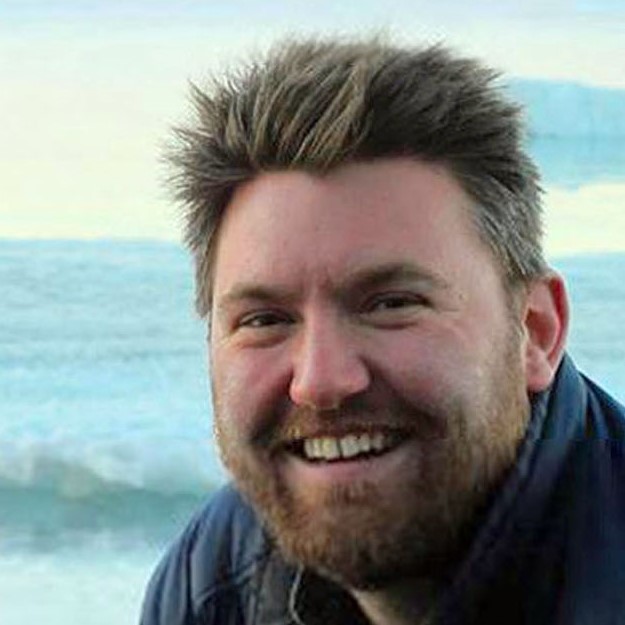 The Specter of True Polar Wander
The Specter of True Polar Wander
Speaker bio
Ross Mitchell is Associate Professor at the Institute of Geology and Geophysics, Chinese Academy of Sciences (IGGCAS) and is interested in how planet Earth works. His areas of expertise include palaeomagnetism, cyclostratigraphy, supercontinents, true polar wander, and Earth history. The Earth system is completely integrated, but plate tectonic theory is not. His research aims to discover the governing dynamics of the supercontinent cycle by taking a systems theory approach.
Abstract
Due to plate tectonics and mantle convection redistributing mass, Earth as it spins must reorient its solid body (mantle and crust) by rotation around the liquid outer core in order to realign its principal moment of inertia with the spin axis, a process known as true polar wander (TPW). Satellites very precisely detect TPW is presently occurring at a rate of ~10 cm/year (i.e., faster than all large tectonic plates are moving). Other planets and moons have experienced TPW, where the largest gravity anomaly in the Solar System (Tharsis magmatic province) sits squarely on the Martian equator, most likely due to TPW. Although TPW is well documented on other planets and moons and with satellites on Earth at present-day, testing its prevalence in Earth’s past is complicated by contemporaneous continental motions due to plate tectonics. This talk will explore why exploring the specter of TPW is important to understanding how Earth works and by what means and methods detecting ancient TPW may be successful.
Series 2, Seminar 2 - Ana Fonseca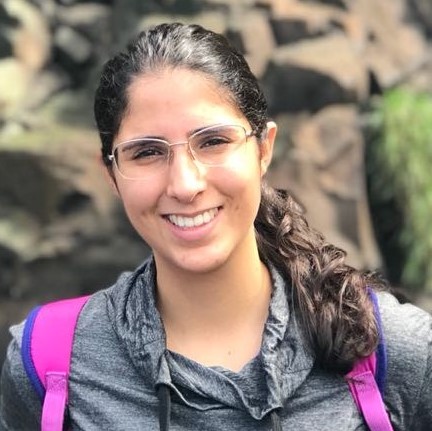 Insights from thermochronology into the differential evolution of cratonic and non-cratonic lithosphere during the Phanerozoic: The case of the São Francisco Craton and its marginal orogens
Insights from thermochronology into the differential evolution of cratonic and non-cratonic lithosphere during the Phanerozoic: The case of the São Francisco Craton and its marginal orogens
Speaker bio
Ana Fonseca is a Master of Science in Regional Geology from Universidade Federal de Minas Gerais (2020) and a PhD candidate at Ghent University. Her research is focused on the Phanerozoic denudation patterns of São Francisco Craton and its adjacent orogens, mainly Araçuaí and Brasília belts, using the low-temperature thermochronology. Her main interest is to understand the impact of the Precambrian geodynamic evolution on the following uplift and denudation events.
Abstract
The São Francisco Craton (SFC) and its marginal orogens (Araçuaí and Brasília orogens) exhibit significant diversity in their lithospheric architecture. They were shaped during the Neoproterozoic–Cambrian orogenic cycle which resulted in the West Gondwana amalgamation. The stiff cratonic lithosphere of the SFC and the relatively weak lithosphere of Araçuaí Orogen were disrupted during the opening of the South Atlantic Ocean, during the Cretaceous, whereas the Brasília Orogen remained in the continental interior. In earlier research, the thermal effects of the Phanerozoic reactivations in the shallow crust of Araçuaí Orogen have been revealed by low-temperature thermochronology, mainly by the apatite fission-track (AFT) method. However, analyses from the continental interior are scarce. We present new AFT data from the Brasília Orogen, the SFC, and the Araçuaí Orogen, far from the Atlantic coast (~150 to 800 km). We compare the differential exhumation pattern of the different geotectonic provinces with their lithospheric strengths. We suggest that the SFC likely concentrated the Meso-Cenozoic reactivations in narrow weak zones while the Araçuaí Orogen displayed a far-reaching Meso-Cenozoic deformation. The Brasília Orogen seems to be an example of a stronger orogenic lithosphere, inhibiting reworking, confirmed by our new AFT data. Understanding the role of the lithosphere rigidity may be decisive to comprehend the processes of differential erosion and the tectonic–morphological evolution over Phanerozoic events.
Series 2, Seminar 3 - Margo Regier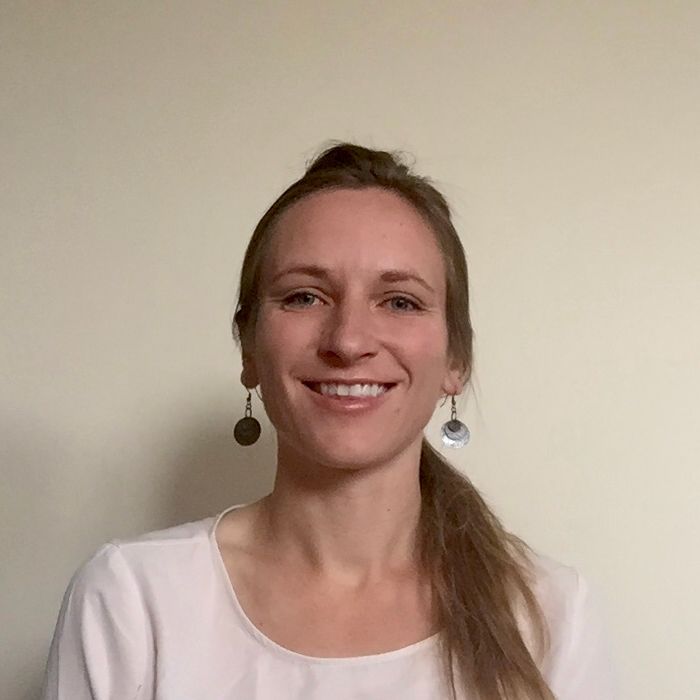 The subduction-driven deep carbon cycle recorded in lithospheric to lower mantle diamonds
The subduction-driven deep carbon cycle recorded in lithospheric to lower mantle diamonds
Speaker bio
Margo Regier has just completed her PhD at the University of Alberta, Canada, and will soon be moving to Washington DC to begin a postdoctoral position at the Carnegie Earth and Planets Laboratory. Her interests span the formation of cratons in the Archean, the production of deep mantle heterogeneities, and the development of Earth’s habitable surface. Margo enjoys the challenges of developing new analytical techniques and is passionate about transforming geosciences into a more inclusive and diverse community.
Abstract
The transport of carbon into Earth’s interior affects not only our planet’s long-term climate and habitability, but also the melting temperature of its mantle. Despite its importance, large uncertainties remain within the global, deep carbon cycle. One means of studying the deep carbon cycle is to examine the solid form of carbon found at high pressures and temperatures – diamond. In this presentation, I will discuss how the stable isotopic analyses of diamonds from the lithosphere, asthenosphere and lower mantle can elucidate the efficiency with which carbon is transported into the mantle. I will present evidence for the presence of diamond-forming, carbonate-rich magmas in the transition zone, and will illustrate how the final dehydration of slabs may remobilize carbon trapped in metallic phases in the lower mantle. This research suggests that substantial carbon is likely removed from the sedimentary and crustal units of the subducting slab at low pressures, and further substantiates experimental evidence for a so-called ‘barrier for carbon subduction’ above the lower mantle.
Series 2, Seminar 4 - Tim Johnson A perspective on the formation and evolution of Earth’s first stable continents
A perspective on the formation and evolution of Earth’s first stable continents
Speaker bio
Tim Johnson joined the Department of Applied Geology at Curtin University in January 2014. Prior to arriving at Curtin he worked for six years as a post-doctoral scientist at the University of Mainz in Germany. Before that he co-owned and ran a pub in Graz, Austria. Tim obtained his Honours degree in 1992 from the University of Derby in England. He was awarded his PhD in 1999 from the same institution for a thesis entitled “Partial melting of Dalradian pelitic migmatites from the Fraserburgh–Inzie Head area of Buchan, north-east Scotland”.
Abstract
There is growing consensus that (much) more than half of the present-day volume of continental crust had already formed by the Mesoarchaean, 3 billion years ago. The surviving remnants of this ancient continental crust mostly comprise variably deformed and metamorphosed magmatic rocks of the tonalite–trondhjemite–granodiorite (TTG) suite that formed by partial melting of hydrated basaltic rocks, which were themselves derived from a mantle that was warmer than currently. However, to my mind, four fundamental questions regarding the early history of the solid Earth remain largely unanswered: (i) how much warmer was the upper mantle in the early Archaean?; (ii) where did the water to hydrate the mafic TTG source rocks come from?; (iii) when did the first stable continents emerge?, and; (iv) in what geodynamic regime (mobile or stagnant lid) did most TTG magmas form? Resolving these intertwined issues, in particular the last, has consequences for uniformitarianism, one of the founding precepts of geoscience. I do not have many or any definitive answers, but I do believe we are making progress, albeit slow, towards their resolution. I’ll present some ideas pertaining to these open questions, which continue to be hotly debated by a vibrant community interested in such things. While the debates will continue to rage, much of the progress made in recent years suggests that a view of the early Earth as being dominated by uniformitarian processes is becoming increasingly difficult to justify.
Series 2, Seminar 5 - Bin Wen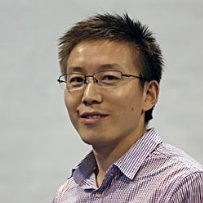 Uncovering the late Ediacaran kinematics of the Avalonia terrane (Newfoundland, Canada)
Uncovering the late Ediacaran kinematics of the Avalonia terrane (Newfoundland, Canada)
Speaker bio
Bin Wen joined China University of Geosciences (CUG-Wuhan) in January 2020. Prior to arriving at CUG-Wuhan he got his Ph.D. degree from Nanjing University in 2016 and worked as a post-doctoral scientist at Yale University with Prof. David A.D. Evans from 2016.7-2019.12. He mainly works on continent and supercontinent reconstructions using paleomagnetism. His current research focuses on three major projects: 1) Rodinia supercontinent evolution (from assembly to breakup) by placing the Greater Tarim Block in a central position within the supercontinent, which provides a new perspective to understand the dynamics of supercontinent cyclicity through the late Neoproterozoic time; 2) Tectonic evolution of Alxa terrane (northwest China) from Paleozoic to Mesozoic and its paleogeographic implications for the configuration of Eurasia; 3) Uncovering the late Ediacaran kinematics of the Avalonia (peri-Gondwana) terrane of Newfoundland, Canada.
Abstract
The evolution of Gondwana and related geodynamics have a profound impact on Earth’s surface environment and the survival and development of organisms in the Ediacaran-Cambrian transition. Due to a lack of high-quality paleomagnetic data, however, there is no consensus on the reconstruction of Gondwana during the Ediacaran period. One main controversy is in West Gondwana: Amazonia, one of the major cratons, loses kinematic constraints due to the lack of key paleomagnetic poles from Ediacaran time, and hence largely hampers the whole view on the configuration of Gondwana and its tectonic evolution during that time. The latest Proterozoic tectonic evolution of Avalonia, one of the largest peri-Gondwana terranes, can help constrain the issue of Gondwana amalgamation during the transition from Rodinia to Pangea. New paleomagnetic studies were carried on the mid–late Ediacaran strata in the Newfoundland sector of Avalonia. In this talk, Bin will share some progress of this project.
Series 2, Seminar 6 - Stephen Foley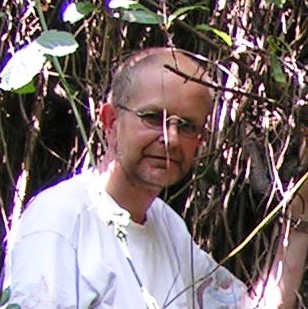 Alkaline magmas and the breakup of cratons
Alkaline magmas and the breakup of cratons
Speaker bio
Stephen Foley is Professor at the Department of Earth and Environmental Sciences at Macquarie University. He has worked for many years on petrology and geochemistry of alkaline igneous rocks, experimental melting of mantle rocks, and on the crustal formation processes in the Archean. He moved to Australia 7 years ago after about a quarter of a century in Germany.
Abstract
The amalgamation and breakup of cratons is essential in the evolution and demise of supercontinents, and also illuminates many aspects of the long-term deep carbon cycle. Carbon is stored gradually in the lower cratonic lithosphere by the movement of low-degree melts, and episodic re-melting of rocks bearing this stored carbon can lead to the gradual breakup of the cratons. Rifts around the world are associated with carbonate-rich magmatism, especially those close to cratons. This seminar reviews the association between carbonate-rich magmas and craton breakup, and how they are linked by melting processes in incipient rifts. It integrates recent work on calcium isotopes that further constrains the types and movements of the magmas involved.
Series 2, Seminar 7 - Silvia Volante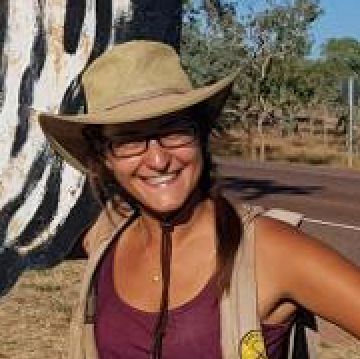 1.6 Ga Orogeny related to the final assembly of Nuna: structural and metamorphic evolution of the Georgetown Inlier (NE Australia)
1.6 Ga Orogeny related to the final assembly of Nuna: structural and metamorphic evolution of the Georgetown Inlier (NE Australia)
Speaker bio
Silvia Volante is a Junior researcher at Ruhr-Universität Bochum in the Tectonic and Resources Research Group in Bochum (Germany). Silvia’s current research focuses on understanding Early Earth processes in Archean terrains by applying a multi-disciplinary approach which combines metamorphic and igneous petrology with geochemistry and geochronology. Prior to starting this postdoc, Silvia completed her MSc studies at the University of Milano (Italy) and carried out a field-based thesis project on the tectono-metamorphic evolution of the Argentera–Mercantour Massif, one of the external massifs of the Western Alps, which encompasses relicts of a Variscan suture zone. In September 2016, she joined Prof. Zheng-Xiang Li’s Earth-Dynamics Research Group at Curtin University to start a field-based PhD project that investigated the tectonic evolution of northern Queensland during the Palaeo–Mesoproterozoic in order to better constrain the configuration and evolution of Precambrian supercontinent Nuna. Silvia submitted her PhD Thesis in April 2020.
Abstract
Recent contributions have refined the tectonic configuration and lifespan of the Proterozoic supercontinent Nuna, but many questions still remain, particularly regarding the connection between Australia and Laurentia. It has been suggested that the final assembly of Nuna was marked by the collision of Australia and Laurentia at c. 1.60 Ga in NE Australia. Decoding the Proterozoic tectonic history of NE Australia is therefore critical for testing the proposed links and reveal the detailed history and orogenic architect related to this collisional event.
In NE Australia at the eastern margin of the North Australian Craton, Proterozoic rocks occur in five main inliers, where the poly-deformed Georgetown Inlier (GTI) is the largest (200 x 200 km) and the best exposed and encompasses the longest geological record (>1.7–1.5 Ga), contemporaneous with the assembly of Nuna. Although the inlier holds key information on the final stages of Nuna assembly, its tectono-thermal evolution remains uncertain.
The GTI is the type region for conceptualization of crenulation cleavage development and where the foliation intersection axes (FIAs) approach has been applied. We re-evaluated both concepts by combining a multiscale petrostructural analysis with recent petrological and geochronological data. Three main deformation events (D1–D3) and associated composite fabrics (S1–S3) are identified in the GTI. Progressive foliation development occurred twice in the GTI, at 1.60 (D1) and 1.55 Ga (D2), but the previous FIA analysis only records the 1.60 Ga event and cannot be easily reconciled with the regional structural analysis.
This study investigates the deformation and metamorphic history of the Georgetown Inlier between c. 1.60 Ga and c. 1.50 Ga to better understand the tectono-thermal records of the region, their significance to the assembly of the supercontinent Nuna, and highlights that a multiscale and multidisciplinary approach is required to unravel the structural history of orogenic belts.
Series 2, Seminar 8 - J. Brendan Murphy, R. Damian Nance, & David Evans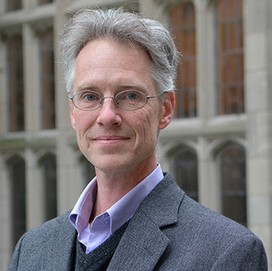
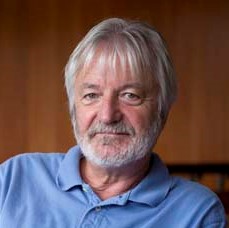
 Epic Earth Science Battle: Pannotia
Epic Earth Science Battle: Pannotia
Speaker bios
J. Brendan Murphy is a native of Birr, Ireland, and moved to Canada after completing his B.Sc. in geology at University College Dublin. He received a Ph.D. in geological sciences at McGill University in 1982 and joined St. Francis Xavier University, where he is now a professor in the Department of Earth Sciences. His research interests include mountain-building processes and the relation between tectonic activity and igneous processes.
R. Damian Nance is a Distinguished Professor Emeritus and past Chair of Geological Sciences at Ohio University. He received his B.Sc. (Hons) in geology at the University of Leicester, UK in 1972. He moved to Canada in 1976 after completing his Ph.D. in geology at the University of Cambridge, where he studied the application of plate tectonic theory to the development of ancient mountain belts and developed his research interest in tectonic activity and large-scale geodynamic processes.
David Evans is a professor of Earth & Planetary Sciences at Yale University. He completed his B.Sc. at Yale University in 1992 before moving to Caltech to undertake his M.Sc. and Ph.D. under the guidance of Joe Kirschvink. His research interests include continental reconstructions; supercontinents; paleomagnetism; characteristics of the Precambrian geomagnetic field; and the implications for the long-term Earth evolution of geodynamics, tectonics, climate change, and life. Prof. Evans is a project co-leader of IGCP 648.
Abstract
Pannotia is a putative supercontinent that may have existed briefly in the Ediacaran but remains highly controversial. Even those in favour of its existence acknowledge that major issues remain about the timing, duration and even its size. Because the assembly, tenure and demise of supercontinents plays a key role in Earth dynamics (through the supercontinent cycles), the very existence of Pannotia, and the legitimacy of Pannotia as a supercontinent is a fundamental question.
To tip the scales one way or the other, Prof. Damian Nance & Prof. Brendan Murphy will present their arguments in favour of Pannotia, and Prof. David Evans, well, he will argue against it.
Battle rules:
- The moderator will flip a coin to decide who will start.
- The two teams will have 20 minutes to present their arguments.
- The moderator will pick 5-6 questions from the audience through the chat and each team will have 2 minutes to respond.
- Each team will have 5 minutes to present their concluding remarks.
- The session will then be open for general discussion/questions.
Series 2, Seminar 9 - Daniel Pastor-Galán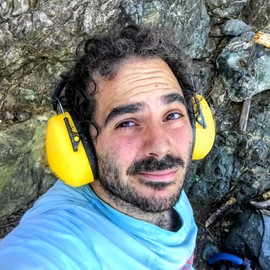 What makes a continent “super”?
What makes a continent “super”?
Speaker bio
Daniel Pastor-Galán is a researcher who works in structural geology, plate tectonics, paleogeography and Earth history combining field geology, paleomagnetism, isotopic methods (U-Pb, Ar-Ar, Lu-Hf, Sm-Nd, O and H) and modeling (numerical and analog).
Daniel completed a Ph.D. at Universidad de Salamanca (Spain) in 2012. Since then and until 2016 he was a postdoctoral fellow at Utrecht University (The Netherlands). He later obtained a prestigious JSPS postdoctoral fellow (Japan Society for Promotion of Science grant, successful rate <10%) to study the tectonic evolution of the Paleotethys and Panthalassa oceans interface during the Pangea amalgamation as an Assistant Professor at Tohoku University.
Abstract
There is an emerging agreement that Earth’s landmasses amalgamate every now and then into supercontinents, many times interpreted to be rigid super-plates essentially lacking tectonically active inner boundaries and showing little internal lithosphere–mantle interactions. The formation and disruption of supercontinents it is thought to be somewhat periodical and have been linked to changes in sea-level, biogeochemical cycles, global climate change, continental margin sedimentation, large igneous provinces, deep mantle circulation, outer core dynamics, Earth’s magnetic field, and roughly any other long term secular variation observable in Earth. If these hypotheses are correct, long-term mantle dynamics and much of the geological record, including the distribution of natural resources, may be largely controlled by these cycles. Despite their potential importance, many of these proposed links are, to date, permissive rather than proven. Sufficient data are not yet available to verify or fully understand the implications of the supercontinent cycle. In this virtual seminar we will explore and debate about the definition of a supercontinent, the prospective implications of forming one and we will go through what we think it is a well known example, the case of Pangea.
Series 2, Seminar 10 - Bo Wan Seismological evidence for the earliest global subduction network at 2 Ga ago
Seismological evidence for the earliest global subduction network at 2 Ga ago
Speaker bio
Bo wan is a geologist who combines field geology, paleomagnetism, geochemistry, and seismology to understand plate tectonics throughout Earth history.
Bo Wan completed his Ph.D. at the Institute of Geology and Geophysics, Chinese Academy of Sciences (IGGCAS) in 2009. He was a postdoctoral fellow until 2011 at IGGCAS, where he became Associate Professor in 2012 and Professor in 2017.
Abstract
The earliest evidence for subduction, which could have been localized, does not signify when plate tectonics became a global phenomenon. To test the antiquity of global subduction, we investigated Paleoproterozoic time, for which seismic evidence is available from multiple continents. We used a new high-density seismic array in North China to image the crustal structure that exhibits a dipping and deepening Moho bearing close resemblance to that of the modern Himalaya. The relict collisional zone is Paleoproterozoic in age and implies subduction operating at least as early as ~2 billion years (Ga) ago. Seismic evidence of subduction from six continents at this age is interpreted as the oldest evidence of global plate tectonics. The sutures identified can be linked in a plate network that resulted in the assembly of Nuna, likely Earth’s first supercontinent. Global subduction by ~2 Ga can also explain why secular planetary cooling was not significant until Proterozoic time.
